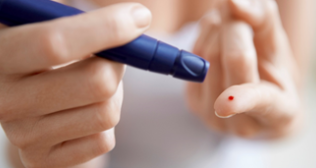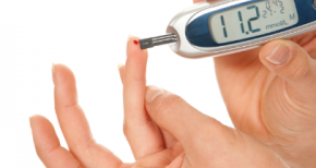
World Diabetes Day: 8 Ways To Get Fit And Beat Diabetes
November 14th is World Diabetes Day.
While there is no dearth of information and conversation around the subject of diabetes, the incidence of diabetes continues to increase manifold across the globe. According to many diabetes specialists, India alone accounts for over 60 million diabetics in the age group of 20-79 years and stands at an alarming second position among the list of top 10 countries for an adult diabetic population.
The facts and figures aside, diabetes continues to rise, most often due to causes and factors that are easily preventable and manageable. Whether you are afflicted by the condition or know someone who does, or are at risk (and with our urban lifestyles, most of us are) – the key to effective diabetes management is lifestyle adjustments and diligence.
Foremost, according to several diabetes specialists in India, is the need to lose weight – If you’re even slightly overweight, this could help immensely. Experts say that losing just 5% to 10% of your total weight can help you lower your blood sugar considerably, as well as lower your blood pressure and cholesterol levels. In a culture that celebrates prosperity with food, our definition of being overweight is often subjective. To set an acceptable rule of thumb – you are at an increased risk of developing diabetes if you are:
- A woman with a waist circumference of 35 inches or more
- A man with a waist circumference of 40 inches or more
Weight loss is best achieved by following some simple steps:
Exercise, Exercise, Exercise—One can’t stress the importance of engaging in physical activity enough. While the recommended minimum is about 3-5 hours of exercise a week, we suggest you get at least 30 minutes of dedicated physical activity in a day. Be it in the gym, on the open roads, on a yoga mat at home, on the treadmill in front of the TV, a game of football or tennis, or a swim – whatever be your preference, get out and get moving. For those who can’t indulge in strenuous activity, include Hatha yoga or brisk walks in your schedule and see the remarkable difference to your health and to your confidence.
Ditch the (unnecessary) sugar—Obviously, the first step is to regulate your sugar intake. But remember, we say ‘regulate’ and not ‘remove.’ You can enjoy your favorite treats as long as you plan properly. Dessert doesn’t have to be off limits, as long as it’s a part of a healthy meal plan or combined with exercise.
Get the carbohydrates right—It’s advised to limit highly refined carbohydrates like white bread, pasta, and rice, as well as soda, candy, and snack foods. Replace these with slow-release carbs which are packed with fiber and help keep blood sugar levels even because they are digested more slowly, such as brown rice, whole wheat pasta, corn, sweet potatoes, and oatmeal
Indulge in good fats—Diabetic or not, one ought to be smart about the fats they consume. Avoid unhealthy fats; saturated fats and trans-fats. Saturated fats are found mainly in animal products such as red meat, whole milk dairy products, and eggs. Trans fats, also called partially hydrogenated oils, are created by adding hydrogen to liquid vegetable oils to make them more solid and less likely to spoil, and are found in nearly all processed and packaged food items. The best fats are unsaturated fats, which come from plant and fish sources and are liquid at room temperature. Primary sources include olive oil, canola oil, nuts, and avocados. Also focus on omega-3 fatty acids, which fight inflammation and support brain and heart health. Good sources include salmon, tuna, and flaxseeds.
Set a timetable for meals—Our body really is a machine, and needs to be preserved accordingly. Our system is better able to regulate blood sugar levels—and weight—when maintained on a regular meal schedule. Aim for moderate and consistent portion sizes for each meal or snack.
Don’t ever skip breakfast—Breakfast really is the most important meal of the day; especially since it’s the fuel needed to kick-start the body after a whole night of damage repair. Start your day off with a good breakfast and maintain your energy and steady blood sugar levels.
Break down your meals—The most common and effective nutrition advice is to replace 3 big meals with 5-6 smaller meals through the day. People tend to eat larger portions when they are overly hungry, so eating regularly will help you keep your portions in check.
Keep a food journal—Multiple studies evince that people who keep a food diary are more likely to lose weight and keep it off. In fact, a recent study found that people who kept a food diary lost twice as much weight as those who didn’t. Keep a food journal and soon you’ll be recording the kilos drop off too!
Remember, diabetes has no cure, but can be managed effectively with some minor intervention.
For more information and myth busting on diabetes, visit us on Facebook or Twitter.




















